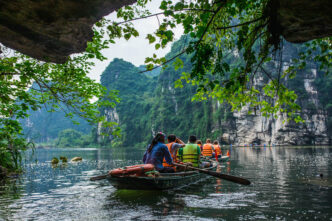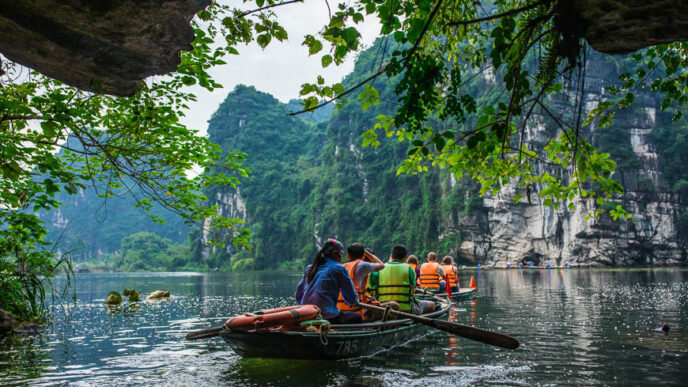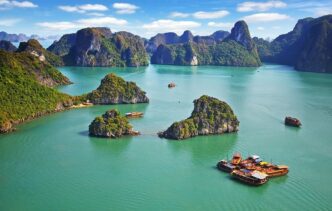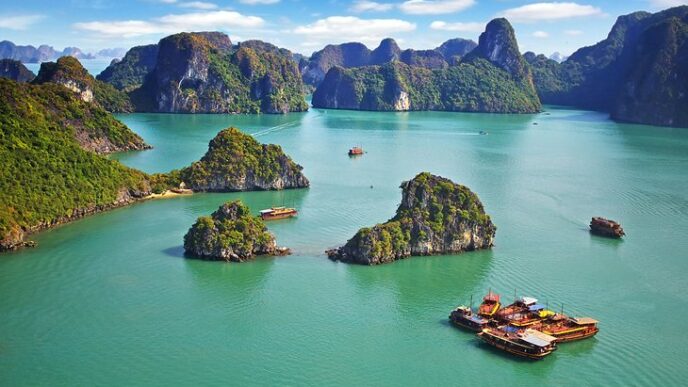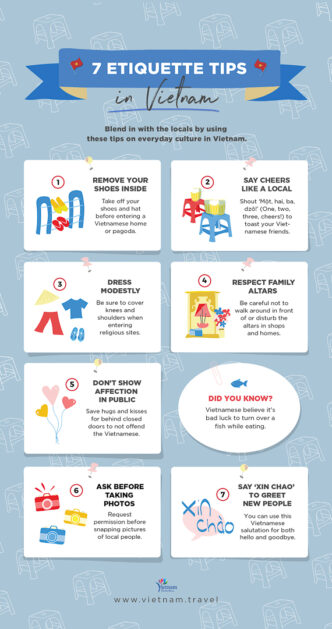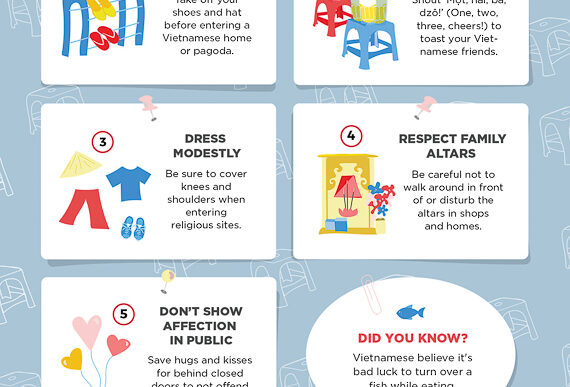Top Historical Sites in Vietnam: A Journey Through Time
Vietnam is a country rich in history, with a deep cultural heritage that spans thousands of years. From ancient civilizations to colonial influences and the struggles of war, Vietnam’s historical sites tell the story of a nation shaped by its past. If you’re a history enthusiast or simply curious about Vietnam’s fascinating journey, this guide to the top historical sites in Vietnam will take you on a captivating journey through time.
1. My Son Sanctuary: A Legacy of the Champa Kingdom
The My Son Sanctuary is one of the most important historical and cultural sites in Vietnam, located in the Quang Nam Province. It was the religious and political center of the ancient Champa Kingdom, which thrived from the 4th to the 13th century. My Son is a UNESCO World Heritage site known for its Hindu temples and structures, which are the remnants of the Champa civilization.
My Son Sanctuary is often referred to as the Angkor Wat of Vietnam due to its impressive architecture and historical significance. The temples are dedicated to the Hindu gods, particularly Shiva, and showcase intricate carvings and sculptures. Though many of the temples have been damaged by time and war, the site remains a symbol of Vietnam’s cultural heritage.
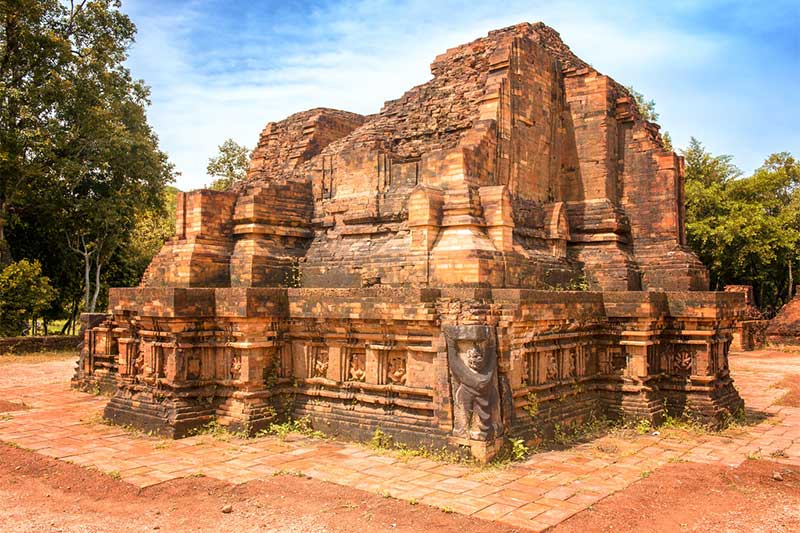
-
Key Highlights:
-
Ancient Hindu temples and shrines
-
Carved stone relics depicting Hindu gods
-
The influence of the Champa Kingdom on Southeast Asian culture
-
Discover more about the Champa Kingdom and My Son Sanctuary here.
2. The Imperial City of Hue: A Glimpse into Royal Vietnam
The Imperial City of Hue is an essential stop for anyone interested in Vietnam’s royal history. Once the capital of the Nguyen Dynasty (1802–1945), Hue is home to the Imperial Citadel, a sprawling complex of palaces, temples, gates, and gardens. This UNESCO World Heritage site offers a fascinating glimpse into the lives of Vietnamese emperors and their court.
Within the citadel, you’ll find several historical buildings, including the Ngo Mon Gate, Thai Hoa Palace, and Forbidden Purple City, which served as the emperor’s private residence. The Royal Tombs scattered around the city, such as those of Emperor Khai Dinh and Emperor Tu Duc, showcase impressive architecture and beautiful landscapes.
-
Key Highlights:
-
The Imperial Citadel: A vast complex of palaces and temples.
-
The Royal Tombs: Mausoleums of the Nguyen emperors.
-
Perfume River: Take a boat ride to explore historical sites along the river.
-

3. The War Remnants Museum: A Sobering Look at the Vietnam War
Located in Ho Chi Minh City, the War Remnants Museum offers a powerful and emotional insight into the Vietnam War. The museum houses a collection of artifacts, photographs, and military equipment that tell the story of the war from the perspective of the Vietnamese people. The exhibits cover the history of the conflict, the consequences of war, and the ongoing impacts on the nation.
Among the most striking exhibits are the displays of military aircraft, tanks, and photographs of war atrocities. Visitors can also explore the tunnel systems used by the Viet Cong during the war. The museum is not only a place of reflection but also an important educational resource for understanding the complex history of Vietnam.
-
Key Highlights:
-
Exhibits on the Vietnam War and its impact.
-
Military equipment such as planes, tanks, and helicopters.
-
Photographic collections documenting the devastation caused by the war.
-
Learn more about the War Remnants Museum.
4. The Cu Chi Tunnels: An Underground Network of Resistance
The Cu Chi Tunnels, located just outside Ho Chi Minh City, are a network of underground tunnels that played a vital role in the resistance during the Vietnam War. These tunnels, stretching over 200 kilometers, were used by the Viet Cong to hide from American forces, store supplies, and launch surprise attacks.
The Cu Chi Tunnels provide an extraordinary look at the ingenuity and resilience of the Vietnamese people. Visitors can tour the tunnels and see how they were used for living quarters, kitchens, and hospitals. The tunnels were designed to withstand bombings and were equipped with traps to deter invaders.
-
Key Highlights:
-
Underground tunnels used during the Vietnam War.
-
A detailed look at the daily life of Viet Cong soldiers.
-
Traps and hidden rooms used for defense.
-
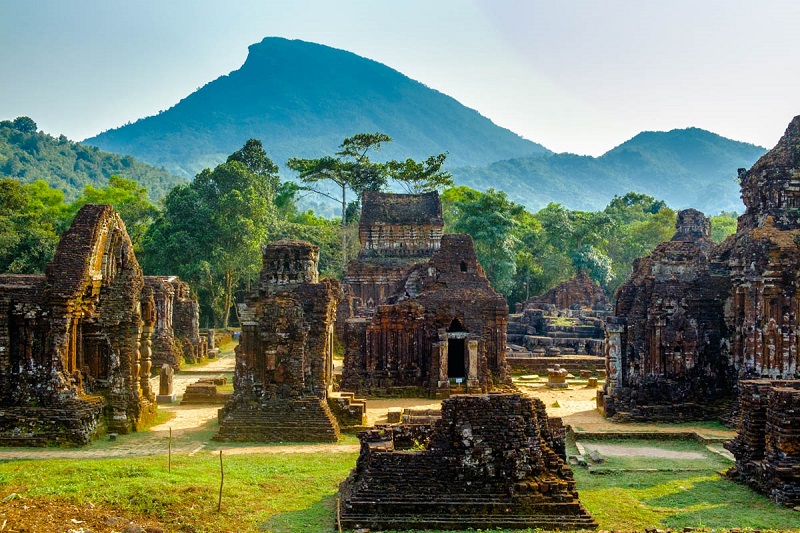
5. The Temple of Literature: A Symbol of Education and Confucianism
The Temple of Literature in Hanoi is one of Vietnam’s oldest and most respected historical sites. Built in 1070, it was originally dedicated to Confucius and served as Vietnam’s first university. The temple is a tribute to learning, scholarship, and the values of Confucianism.
The complex is beautifully designed, with courtyards, pavilions, and ancient stone tablets inscribed with the names of successful graduates. It remains a popular place for students to visit and pray for academic success. The Temple of Literature is a reflection of Vietnam’s deep respect for education and its historical relationship with Confucian thought.
-
Key Highlights:
-
Courtyards and pavilions dedicated to learning and Confucianism.
-
Stone tablets inscribed with the names of scholar graduates.
-
A symbol of Vietnam’s educational traditions.
-
6. The Ho Chi Minh Mausoleum: Paying Respects to the Father of Vietnam
The Ho Chi Minh Mausoleum, located in Hanoi, is an iconic historical site dedicated to the memory of Ho Chi Minh, the revolutionary leader who led Vietnam to independence from French colonial rule. The mausoleum houses the embalmed body of Ho Chi Minh, and visitors come here to pay respects to the man known as Uncle Ho.
The mausoleum is a significant symbol of Vietnam’s struggle for independence and its socialist ideals. The surrounding Ba Dinh Square is also an important historical site, where Ho Chi Minh declared the independence of the Democratic Republic of Vietnam in 1945.
-
Key Highlights:
-
The Ho Chi Minh Mausoleum: A place to honor the nation’s founding leader.
-
Ba Dinh Square: Where Ho Chi Minh declared Vietnam’s independence.
-
A symbol of Vietnam’s socialist history.
-

7. The Mekong Delta: A Living History of Vietnam’s Rural Life
The Mekong Delta is a region of southern Vietnam where history and nature intertwine. The area is home to floating markets, traditional villages, and a vast network of rivers and canals. The Mekong Delta has played a significant role in Vietnam’s agricultural development and remains a vital part of the country’s economy.
Visitors can explore the floating markets, where vendors sell fruits, vegetables, and goods directly from their boats. The region also features several historical sites and war memorials that highlight its role in the Vietnam War and its ongoing cultural significance.
-
Key Highlights:
-
Floating markets like Cai Be and Can Tho.
-
Historical sites and war memorials in the region.
-
Traditional wooden boats and local villages.
-
Conclusion: Experience the Depth of Vietnam’s History
Vietnam’s historical sites offer a profound glimpse into the country’s rich cultural heritage and tumultuous past. From the ancient Champa temples of My Son to the powerful remnants of the Vietnam War, these sites allow visitors to experience the historical journey of a resilient and proud nation.
Whether you’re exploring the Imperial Citadel of Hue or reflecting on the impact of war at the War Remnants Museum, Vietnam’s history is both educational and emotional. A visit to these historical sites will deepen your understanding of Vietnam’s heritage, making your journey all the more meaningful.
FAQs
1. What is the best historical site in Vietnam?
It’s difficult to choose just one, but the Imperial City of Hue and My Son Sanctuary are two of the most significant historical sites in the country, each offering a unique insight into Vietnam’s past.
2. Are these historical sites accessible for all travelers?
Most historical sites, like the War Remnants Museum and Cu Chi Tunnels, are accessible for all visitors. However, some sites, like My Son Sanctuary, may require a bit more physical effort, especially if you’re trekking or exploring ruins.
3. What is the best time to visit historical sites in Vietnam?
The best time to visit is during the dry season (from November to April), as the weather is more pleasant for sightseeing.
4. How can I travel between historical sites in Vietnam?
Vietnam has an excellent public transportation system, including trains, buses, and flights between major cities. For local exploration, taxis and motorbike rentals are common.



